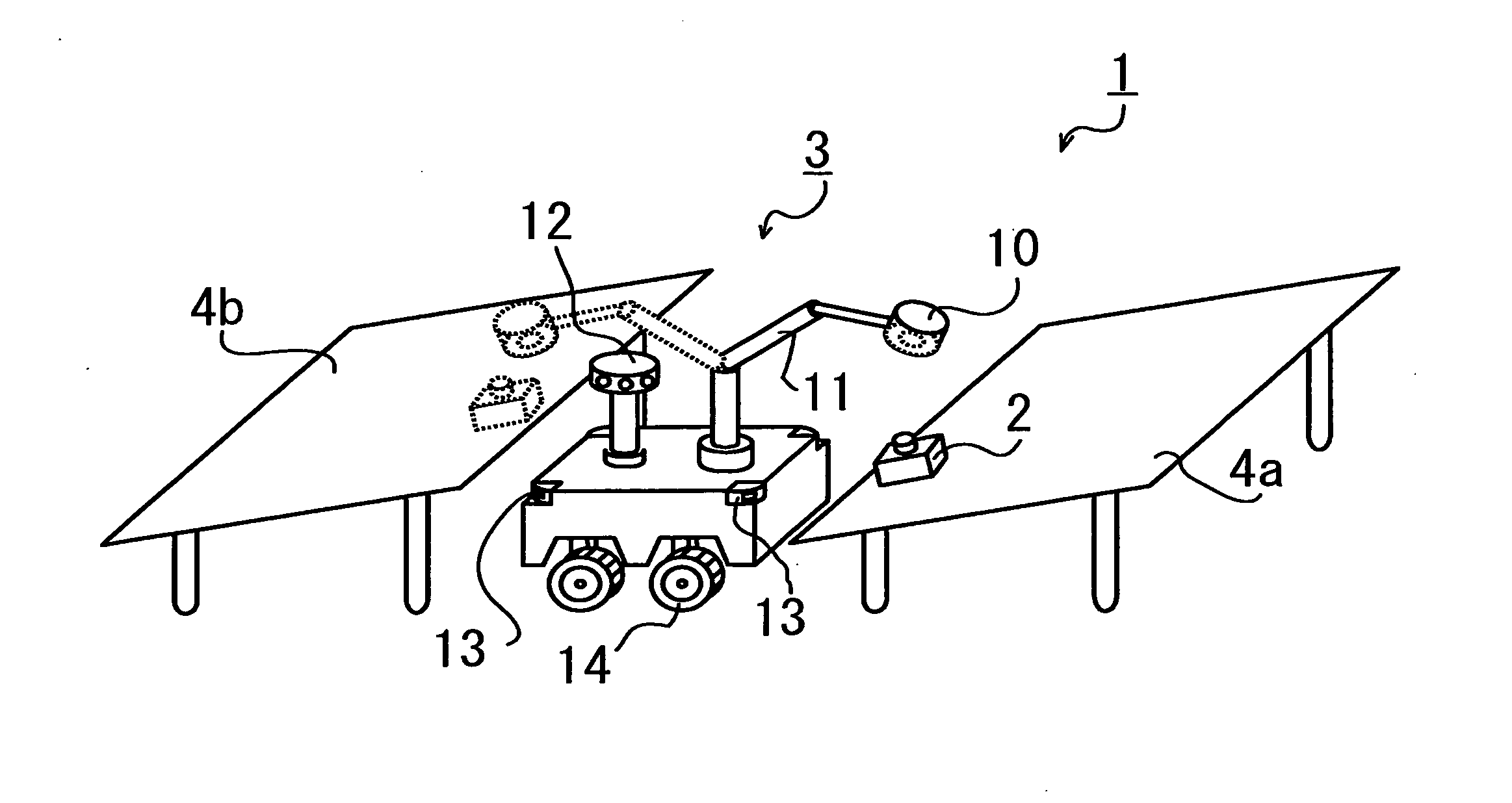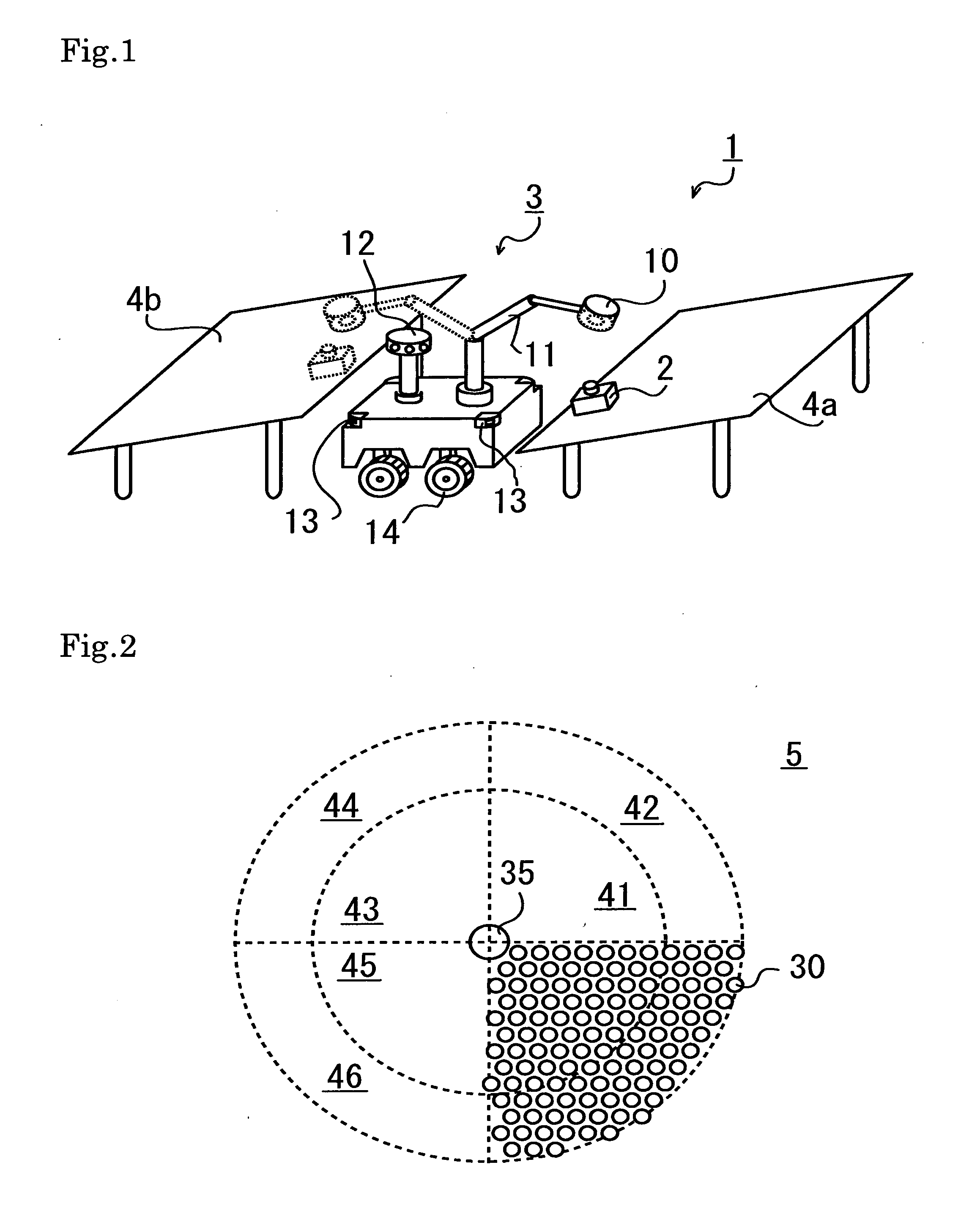Cleaning robot system and method of controlling same
a robot and cleaning technology, applied in the field of robot systems, can solve the problems of reducing the work efficiency of the cleaning robot, no countermeasure against the problem has been established, and the method involves a lot of work, so as to improve the work efficiency of the cleaning work and improve the economy
- Summary
- Abstract
- Description
- Claims
- Application Information
AI Technical Summary
Benefits of technology
Problems solved by technology
Method used
Image
Examples
Embodiment Construction
[0041]Hereinafter, a cleaning robot system of an embodiment according to the present invention and a method of controlling the same will be described with reference to the drawings. FIG. 1 shows a configuration of the cleaning robot system of the embodiment according to the present invention.
[0042]The cleaning robot system 1 includes: a cleaning robot 2 for cleaning plate-shaped members 4a, 4b, such as panels for photovoltaic power generation or reflecting mirrors for solar thermal power generation, for example, which are to be cleaned; an arranging robot 3 for moving the cleaning robot 2 from the first plate-shaped member 4a to the second plate-shaped member 4b. The cleaning robot 2 has, for example, a device configured to spray water, a cleaning liquid, and the like for cleaning, and a cleaning function to clean a surface of each of the plate-shaped members 4 with a rotary brush or the like, and also has a traveling function to travel on the surface of each of the plate-shaped mem...
PUM
 Login to View More
Login to View More Abstract
Description
Claims
Application Information
 Login to View More
Login to View More - Generate Ideas
- Intellectual Property
- Life Sciences
- Materials
- Tech Scout
- Unparalleled Data Quality
- Higher Quality Content
- 60% Fewer Hallucinations
Browse by: Latest US Patents, China's latest patents, Technical Efficacy Thesaurus, Application Domain, Technology Topic, Popular Technical Reports.
© 2025 PatSnap. All rights reserved.Legal|Privacy policy|Modern Slavery Act Transparency Statement|Sitemap|About US| Contact US: help@patsnap.com



